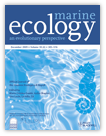Phenolics and Proteins Affecting Palatability of Spartina Leaves to the Gastropod Littoraria irrorata
Abstract
Along the southeastern coast of the United States, the saltmarsh periwinkle Littoraria irrorata is a major consumer of Spartina alterniflora. It prefers to feed on dead rather than living plants. During senescence and early decay, S. alterniflora leaves become colonized by fungi, their phenolic content declines, and their lipid content increases. In this study, the food preferences of L. irrorata were assessed by offering intact leaves or leaf powder suspended in agar. Relative palatabilities were determined by measuring the weight loss of intact leaves, or by estimating the area of feeding marks left on the surface of leaf powder suspensions. Both techniques demonstrated a clear preference for standing dead rather than yellow-green (senescent) leaves. Yellow-green leaves contained methanol-soluble feeding deterrents. A comparable deterrent effect could be achieved by adding ferulic acid, a phenolic compound common in yellow-green S. alterniflora, to leaf powder. The deterrent effects of methanol extracts or ferulic acid could be neutralized by simultaneously adding fungal mycelium or BSA. Littoraria irrorata preferred leaves colonized by fungi or bacteria over sterile leaves. When offered a choice of sterile leaves colonized by different fungi, the results were variable. In one experiment, L. irrorata clearly preferred one of three leaffungus combinations. The same preference was shown after the food items were treated with methanol/chloroform to remove lipids. In a second experiment with four other fungal strains, there was only a clear preference for one leaf-fungus combination after removal of lipids. The results suggest that the saltmarsh periwinkle prefers S. alterniflora leaves with low concentrations of phenolic deterrents, most likely ferulic acid, and with sufficient fungal biomass. The food choice may be influenced to a smaller degree by fungal components, which, depending on the species or strain, may be lipids or other compounds.




